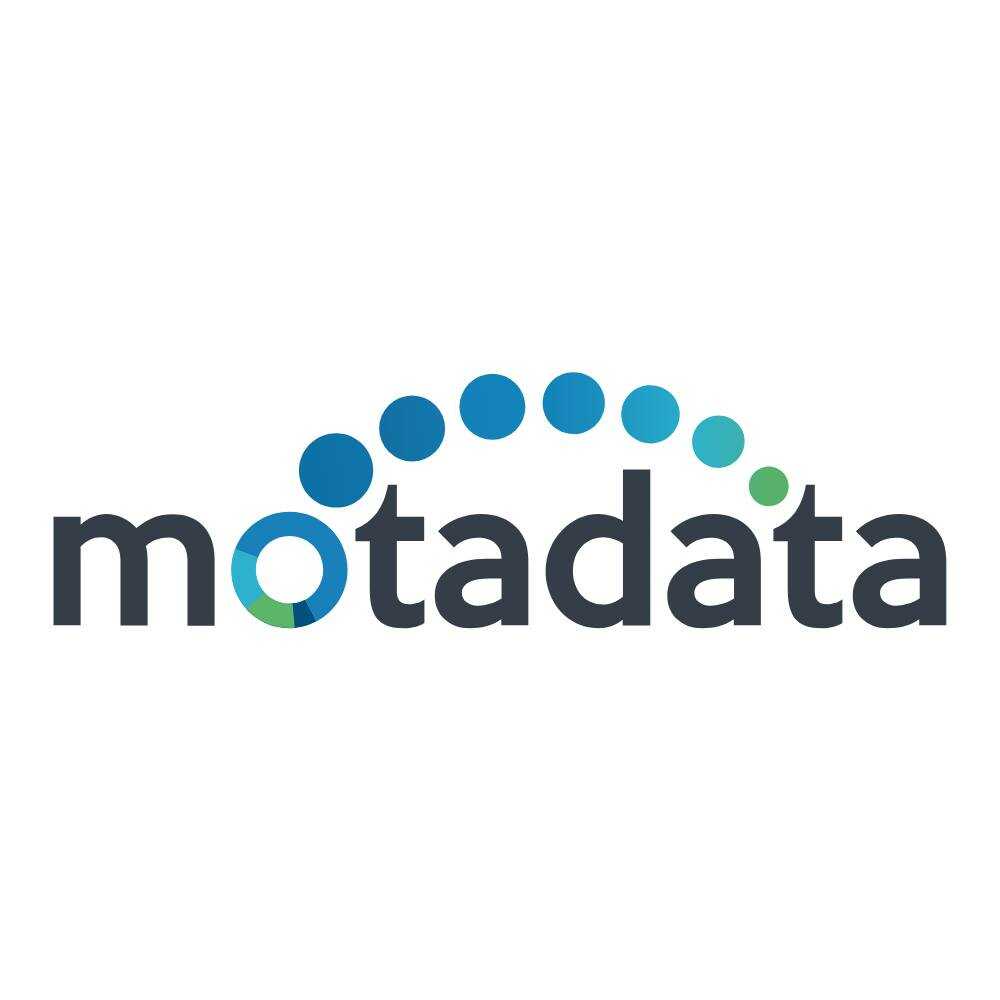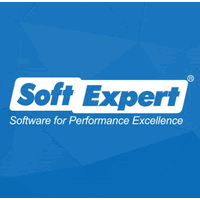What Is Problem Management Software?
Problem Management Software is a strong tool for identifying, tracking, and resolving issues that develop inside an organization's IT infrastructure. This program takes an organized approach to problem identification, analysis, and resolution, assuring efficient and effective management of issues that may disrupt corporate operations.
At its core, Problem Management Software simplifies the process of recognizing and resolving reoccurring problems, hence lowering the overall impact on business operations and enhancing productivity. It also allows for speedier resolution timeframes, reducing the impact of problems on end customers. One of the software's primary characteristics is its capacity to consolidate and organize problem-related information, allowing for a thorough and methodical approach to issue management.
It also promotes team collaboration by ensuring effective communication and coordination in problem resolution. Efficient problem management is crucial for businesses because it keeps problems from repeating and affecting daily operations. Using Problem Management Software, firms may proactively anticipate prospective problems, preventing them from generating substantial disruptions in the future.
When considering an investment in Problem Management Software, seek for a solution that has a user-friendly interface, customizable functionality, and connection with existing IT systems. Furthermore, it should provide reporting and analytics capabilities to help track trends and find areas for development.
What Are The Recent Trends In Problem Management Software?
In recent years, the use of technology in company operations has grown significantly. As the population has grown, so has the demand for efficient and effective problem management software. Businesses use problem management software to discover and troubleshoot problems in their systems and processes, resulting in increased efficiency and lower costs. The incorporation of artificial intelligence and machine learning capabilities is a major trend in problem management software.
These technologies enable the program to study and predict reoccurring issues, allowing IT staff to solve them before they arise. This results in speedier resolutions and reduces the impact of issues on corporate operations. Another trend is the emphasis on creating a user-friendly and intuitive interface. As more firms employ problem management software, there is a greater demand for products that non-technical team members can easily explore and use.
This tendency has resulted in the creation of visually appealing and user-friendly interfaces, making problem management more accessible to a broader variety of people. Cloud-based solutions are also gaining traction in the problem management software industry. As businesses move toward remote work and hybrid office setups, the demand for software that can be accessed from anywhere grows.
Cloud-based solutions provide the flexibility and scalability that modern businesses want, allowing them to manage and track issues from any location. Furthermore, there has been a trend toward adopting a more holistic approach to problem solving. Instead of treating individual difficulties, software vendors are now delivering tools that may identify core causes and propose remedies to avoid future problems.
This method not only saves time and costs, but also assists organizations in maintaining a robust and reliable infrastructure. One final trend to watch is the rising emphasis on data security. As organizations store and handle vast volumes of data, safeguarding it has become a primary issue. To protect sensitive information, problem management software now contains advanced security features such as encryption, data access limits, and audit logs.
Benefits Of Using Problem Management Software
Problem management software is a critical tool for businesses of all kinds, providing a streamlined and efficient method for identifying, tracking, and resolving issues inside a company. This software is intended to assist businesses manage their processes and workflows, resulting in smoother operations and higher customer satisfaction.
Let's explore, we will look at the benefits of utilizing problem management software and how it may help your organization succeed.
1. Streamlines Issue Tracking And Resolution: One of the primary benefits of problem management software is its ability to simplify the entire issue tracking and resolution process. This software collects all reported problems into a single system, allowing for more efficient and structured administration. This allows your team to track issues in real time, prioritize them, and allocate them to appropriate staff for resolution. As a result, problems can be rectified quickly and efficiently, reducing downtime and increasing production.
2. Promotes Transparency And Collaboration: Problem management software encourages transparency and collaboration within your organization. It provides a centralized platform from which all team members can access and update the status of reported issues, ensuring that everyone is on the same page. This also allows for better communication and collaboration among teams, promoting a culture of teamwork and accountability. When everyone works collaboratively, problems can be solved faster, resulting in an overall improvement in company processes.
3. Improves Root Cause Analysis; Identifying the underlying cause of a problem is critical for avoiding recurrence and optimizing business processes. Problem management software includes tools like trend analysis and data visualization, which make it easier to discover trends and underlying problems. This enables your team to adopt a proactive approach to problem solutions, addressing the fundamental cause and avoiding similar difficulties in the future.
4. Promotes Continuous Improvement: Businesses can use problem management software to track and analyze the success of their solutions, allowing them to sustain a continuous improvement cycle. This software allows you to monitor the resolution process, get feedback, and make required changes to improve your operations. This guarantees that your company is always evolving and improving, keeping ahead of possible problems and ensuring client happiness.
5. Reduces Costs And Downtime: Effective problem management is critical for reducing costs and downtime in enterprises. Using problem management software allows your team to rapidly settle concerns and avoid them from growing into larger difficulties. This minimizes the impact of problems on your business operations, resulting in cost savings and enhanced efficiency.
Important Factors To Consider While Purchasing Problem Management Software?
When choosing problem management software, numerous crucial criteria should be considered to ensure that you make an informed purchase.
Buyers should consider the following essential factors when assessing and buying problem management software:
1. Ease Of Use: The first consideration is how easy the software is to use. It should have an intuitive user interface and efficient processes that allow team members to access and use the software without requiring substantial training or technical expertise.
2. Customization And Flexibility: Each organization has own processes and workflows, and the problem management software you select should be able to adapt to your individual requirements. Look for software that allows for easy modification and integration with your existing systems.
3. Features And Functionalities: The software should include all of the features and functionalities required for successful problem management and tracking. This could include event categorization, root cause investigation, and the ability to generate automated workflows and notifications.
4. Reporting And Analytics: Problem management software should have extensive reporting and analytics to assist in identifying reoccurring issues, tracking performance indicators, and pinpointing areas for improvement. Look for software that provides configurable reporting and real-time data analysis.
5. Collaboration And Communication: When working on complicated challenges, team members must collaborate and communicate effectively. Select software that provides team collaboration capabilities that enables transparent communication and recording of problem-solving processes.
6. Integration With Other Products: Problem management software should be compatible with other products and systems in your firm, such as IT service management software or project management tools. This will help to streamline operations and ensure an efficient flow of information.
7. Scalability: As your firm grows, your problem management requirements may vary. It is critical to select software that can scale with your company and support future expansion.
8. Vendor Support And Long-Term Costs: Finally, take into account the software vendor's support and the long-term costs of employing the product. Examine the vendor's reputation, customer service alternatives, and whether the product matches your budgetary needs.
Keeping these considerations in mind will enable you to make an informed selection when selecting problem management software for your firm. It is critical to carefully consider your options and select software that best meets your organization's needs and goals.
What Are The Key Features To Look For In Problem Management Software?
Problem management software is an important tool for businesses of all sizes since it helps identify and manage issues that might disrupt everyday operations and affect customer satisfaction. With so many options on the market, it can be difficult to find the correct software for your firm.
To assist you in making an informed decision, below are the essential aspects to consider while selecting problem management software:
1. Incident tracking And Management: Problem management software's primary job is to track and resolve occurrences. Look for software that allows you to capture and categorize all incoming issues, allocate them to stakeholders, and monitor their progress until resolution.
2. Automated Workflows: Efficiency is critical when solving problems, and automated workflows can considerably improve it. Look for tools that can automate repeated operations, such as reporting events to the proper teams or notifying stakeholders. This frees up your team's time and allows them to concentrate on more pressing challenges.
3. Knowledge Base Management: A complete knowledge base is required for effective problem solving. Look for software that enables you to establish and manage a knowledge base of known issues and solutions. This can save your team time and lessen the likelihood of reoccurring issues.
4. Integration Capabilities: Problem management is frequently linked to other IT processes, such as incident and change management. Look for software that may be integrated with other systems to help streamline these procedures and guarantee that information flows smoothly.
5. Reporting And Analytics: Data is critical for understanding your organization's pain areas and making data-driven decisions. Look for software that includes a variety of reporting and analytics tools for tracking and analyzing incident trends, identifying reoccurring issues, and evaluating your team's performance.
6. Customization Options: Each firm has its own set of processes and operations. Look for software that allows for modification, such as the ability to build custom fields or workflows, so that you may adjust it to your organization's specific requirements.
7. Teamwork Tools: Good communication and teamwork are critical for problem solving. Look for software that has collaboration capabilities, such as chat or team discussion boards, so that your team can work together easily.
8. Mobile Accessibility: In today's fast-paced environment, it is critical to have information at your fingertips. Look for software that has a mobile app or a flexible web interface, so you can handle problems from anywhere.
9. User-Friendly Interface: Any software's success depends on its user-friendliness. Look for software that is intuitive and simple to use, with a clear and structured interface that will save your team time and reduce user error.
10. Customer Support: No program is perfect, so you may face problems or have queries along the road. Look for software that provides consistent customer help, whether via a dedicated support team, online resources, or a community forum.
By taking these essential qualities into account, you can choose problem management software that meets the demands of your organization and streamlines the problem-solving process. Remember to consider your organization's specific needs and budget before making your decision.
Why Do Businesses Need Problem Management Software?
Businesses face a variety of challenges and obstacles on a regular basis. These concerns can include technical glitches, client complaints, and challenges with internal operations. Businesses want reliable problem management software to efficiently handle and resolve these issues in a timely and efficient manner. To begin, problem management software can help to streamline the entire problem-solving process.
It enables enterprises to record and track all reported concerns in a centralized database, ensuring that no issue falls through the cracks. This promotes better communication and collaboration among team members, resulting in faster and more effective solutions. Furthermore, problem management software includes capabilities like automated processes, task assignment, and priority settings.
These capabilities assist businesses in prioritizing and assigning tasks to the appropriate team members, ensuring that problems are resolved in a timely way and the workload is split equally. Furthermore, problem management software enables firms to examine and identify reoccurring issues and their main causes. This enables firms to proactively develop long-term solutions and avoid similar challenges in the future.
Furthermore, by spotting patterns and trends, firms can optimize their operations, resulting in greater overall efficiency. Another significant advantage of problem management software is its capacity to generate real-time insights and reports. Businesses can generate reports on the number of issues raised, the time it takes to handle them, and the overall success rate of the problem-solving process.
These insights can help firms identify areas for improvement and make data-driven decisions. In today's fast-paced business environment, organizations must be proactive and constantly improve their operations. Problem management software enables firms to handle problems in a systematic and structured manner, resulting in more customer satisfaction, lower expenses, and enhanced productivity.
How Much Time Is Required To Implement Problem Management Software?
The time required to implement problem management software varies according to the software selected and the complexity of the organization's problem management processes. In general, completely implementing and integrating software into an organization's existing systems and procedures can take anything from a few weeks to several months.
The first stage in installing problem management software is a thorough evaluation of the organization's needs and requirements. This could include conducting internal audits, identifying pain areas, and mapping out present problem-solving processes. This initial planning process might last anywhere from one to four weeks, depending on the size and complexity of the business.
Once the requirements have been identified, the following step is to choose the appropriate software solution. This procedure can take between 2 and 6 weeks, depending on the budget, number of suppliers considered, and time required for demos and reviews. After choosing the program, the implementation step begins. This can take anywhere from 4 to 12 weeks, depending on the complexity of the program and the extent of customization required to meet the organization's demands.
This phase involves configuring the software, integrating it with existing systems, and testing its functionality. Once the program has been established, it is critical to train personnel on how to utilize it successfully. This training step can last 1-2 weeks, depending on the number of employees and their previous expertise with similar software. Finally, set aside 1-2 weeks to troubleshoot and fine-tune the software, as well as make any necessary changes depending on user input.
What Is The Level Of Customization Available In Problem Management Software?
Problem management software provides varying levels of customization to meet the individual demands and preferences of its users. The level of customisation possible is determined by the software's capabilities and functionalities.
This guide will provide an overview of the many levels of customization possible in problem management software, allowing purchasers to make an informed choice.
1. Basic Customization: Problem management software allows users to adjust specific features such as the user interface, dashboard, and fields. They can also configure specific options according on their needs, such as email notifications, unique ticket statuses, and user roles and permissions.
2. Advanced Customization: Some problem management software has advanced customization capabilities, allowing customers to adjust the software to their own company procedures. This includes the ability to design custom forms, workflows, and automation rules. Users can also incorporate third-party programs and tools to extend the software's capability.
3. Code-Level Customization: For firms with distinct and complex procedures, problem management software with code-level customization is the best option. This level of customisation allows users to view and edit the software's source code to suit their individual requirements. However, this solution necessitates technical knowledge and may require assistance from the program supplier or a third-party developer.
4. White Labeling: Some problem management software provides white labeling options, allowing customers to customize the software with their own branding, logo, and colors. This gives the software a more personalized and professional appearance, connecting it with the company's corporate identity.
5. Modular Customization: Users can add or delete features and functionalities based on their needs. This allows consumers to develop a customized solution that suits their individual requirements without having to pay for items they don't require.
Which Industries Can Benefit The Most From Problem Management Software?
Problem management software is a versatile tool that can help a variety of businesses. Its major goal is to discover, record, and resolve reoccurring issues in a methodical and effective manner. This can result in major improvements to overall business processes, cost savings, and, eventually, customer happiness. The IT industry, in particular, can tremendously benefit from problem management software.
IT departments are in charge of maintaining sophisticated systems and networks that are prone to problems like as outages, disruptions, and errors. Problem management software can assist identify and fix these issues promptly, lowering the impact on corporate operations and decreasing downtime. Customer service and assistance can also benefit from problem management software.
consumer support representatives are frequently besieged with repetitive consumer complaints and issues. Using problem management software, these teams may solve underlying issues, minimize the frequency of reoccurring problems, and increase their response time to client inquiries. Manufacturers can also benefit from trouble management software.
Various problems might arise during the manufacturing process, such as equipment breakdowns, material shortages, and quality issues, resulting in delays and increased production costs. Problem management software can assist manufacturers in determining the core cause of these issues, allowing them to make necessary changes and take preventive measures to avoid future problems.
Additionally, healthcare businesses might benefit from problem management software. In the healthcare profession, patient care and safety are key concerns. Using problem management software, healthcare providers can proactively detect and handle any concerns that may affect patient care, resulting in better outcomes and higher satisfaction.
Conclusion
To summarize, problem management software is an essential tool for any organization seeking to improve its IT service management processes and efficiently mitigate and handle IT issues. It enables streamlined processes, efficient tracking and analysis of problems, and proactive problem management to avoid future events. When deciding on problem management software, it is critical to analyze your organization's specific objectives and goals.
Consider elements such as usability, integration capabilities, reporting and analytics tools, scalability, and price. Remember to include key stakeholders and IT teams in the decision-making process, as their feedback and buy-in are critical for the software's effective implementation and utilization. Furthermore, thoroughly researching and demoing various software solutions, reading reviews and user feedback, and seeking advice from reputable sources can all aid in making an informed decision.
Overall, investing in dependable and comprehensive problem management software can significantly improve your organization's IT service management, resulting in overall business success. We hope this buyer's guide has helped you find the best problem management software for your firm.











